2.26" June rainfall, to date.
1.89" normal June rainfall, to date.
85 F. high temperature yesterday in the Twin Cities.
79 F. average high on June 14.
74 F. high on June 14, 2016.
June 15, 1989: Scattered frost develops across Minnesota, with the coldest reading of 29 at Isabella.
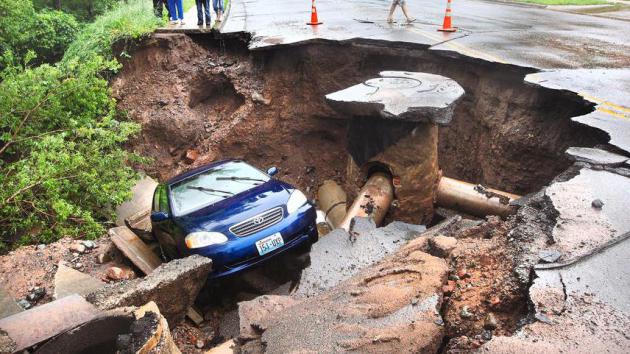
An Opportunity for Storm-Resistant Infrastructure
A recent fusillade of storms, hail & high water was a vivid reminder that we need to keep the lights on, no matter what Mother Nature throws at us. Every threat is an opportunity for disruption and reinvention. As we talk about infrastructure, why wouldn't we try to make everything we do more storm-resilient, flood-proof and drought-tolerant?
I'm still waiting for 3M (or grad students in a garage) to invent and market hail-proof film I can stick on my car. Hail-resistant singles? Basements that don't flood? Road surfaces, pipes and culverts that can better handle 21st century downpours? Crops less susceptible to drought (and standing water)? Someone is going to invent this stuff - it should be cooked up right here at home.
We get a welcome break from raging storms into Friday morning, but showers and T-storms return late Friday into the weekend as a surge of Canadian air pushes south. A cooling trend is all but inevitable; we may not climb out of the 60s on Sunday. Sorry, I'm just the reluctant messenger.
The mercury mellows next week; a few of the models are now hinting at STINKING HOT weather by the 4th. That would be nice.
2012 Duluth flood aftermath file photo: Bob King, Duluth News Tribune.
Dangerous Levels of Heat Brewing for Desert Southwest. Here's a clip from USA TODAY: "...Many desert locations, including Phoenix, could climb as high as 115 to 120 degrees Sunday through Wednesday, the weather service said. That could rival the all-time high temperature of 122 degrees set at Phoenix Sky Harbor Airport in 1990. Notorious hot spot Death Valley, home to the world's all-time hottest temperature of 134 degrees, will soar to 123 degrees by Sunday. Nights won't provide much relief: the low temperature will drop to only the low 90s. Heat will also scorch the central valley of California, where cities such as Bakersfield, Fresno and Sacramento will see highs over 100 degrees..."
Cool, Cyclonic Swirl. From space storms look like comma clouds, and the afternoon visible image showed a strong storm spinning up over south central Canada. This system will pull cooler air into the northern Plains, Midwest and Great Lakes in waves; a cool break for many northern towns into early next week. The image also shows the thunderheads that mutated into severe storms across eastern Iowa, Wisconsin and Illinois. Imagery Aeris AMP.
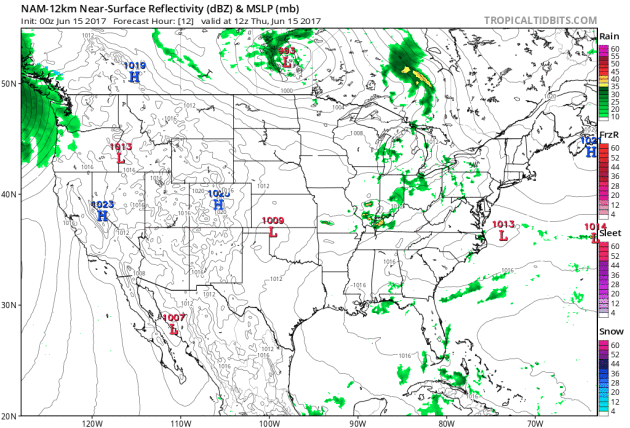
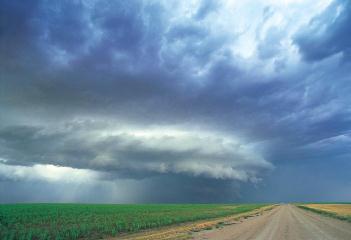
Photo credit: "This picture from Burncoat Street in Worcester shows the pile of debris left the day after the tornado." Boston Globe file photo.
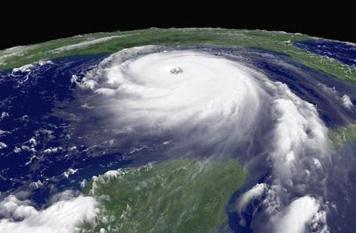
Does the White House Back Better Hurricane Forecasting? The Signs Point Both Ways. So says an article at NBC San Diego: "As
hurricane season begins, and scientists predict the Atlantic Ocean
could see another above-normal year, the White House is sending
contradictory messages about whether it supports funding for better
weather forecasting. On the one hand, President Donald Trump in April
signed a bipartisan Congressional bill that protects improvements to
hurricane forecasting and tsunami warnings from budget cuts. On the
other, the president's proposed budget for 2018 fiscal year, released in
May, would slash funding for those very programs, operated by the
National Oceanic and Atmospheric Administration and its National Weather
Service. NOAA accounts for much of the 16 percent reduction to the
Commerce Department, of which it is a part..."
8 Tips for Shooting an Award-Winning Tornado Photo. National Geographic photographer Jim Reed has some good advice at PetaPixel: "I’ve been photographing extreme weather for 25 years. After publishing tips on how to photograph lightning here back in March, I was asked to share any tips I have in capturing an award-winning tornado image. So, here I go…
Note to reader: Storm chasing and extreme weather photography, as discussed in this article, can be very dangerous. Any person should approach these activities with caution and appropriate supervision and training.
Tip 1: Study Your Subject and Risks
Adopting a ‘safety first’ policy is critical when storm chasing. To start, I recommend reading The Basics of Tornadoes on the Storm Prediction Center website. In my experience, storm chasing risks fall somewhere between climbing Mount Everest and shopping at Wal-Mart on Black Friday. Veteran storm chaser Chuck Doswell has an excellent article titled “Storm Chasing with Safety, Courtesy and Responsibility....”
Dust Bowl-ification of U.S. Southwest Leads to 8-Fold Jump in Valley Fever Cases. Some harrowing research highlighted at ThinkProgress: "The
infection rate of Valley Fever in the Southwest United States has gone
up a stunning 800 percent from 2000 to 2011, as dust storms have more
than doubled. New research directly links
the rise in Valley Fever to the rise in dust storms, which in turn is
driven by climate change. Valley Fever, which the Centers for Disease
Control and Prevention calls “a fungal lung infection that can be devastating,”
is caused by inhaling soil-dwelling fungus. When the soil dries out and
turns to dust, the wind can make the fungus airborne. “Dust storms are
found to better correlated with the disease than any other known
controlling factor,“ a new study led by NOAA scientists concluded...."
Map credit: "Dust
storms spike with Valley fever cases. The largest number of dust storms
from 1988 to 2011 are concentrated in the SW states reporting the
highest numbers of fever cases."
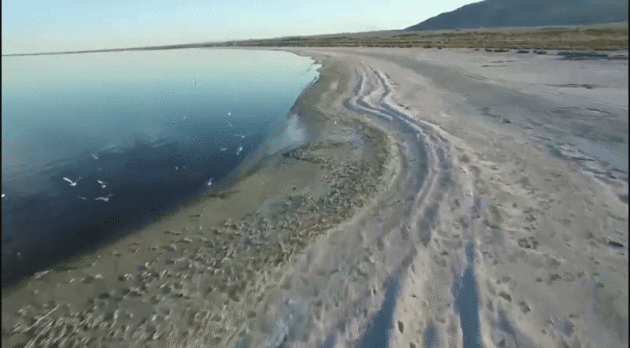
The Dying Salton Sea. How much is natural vs. driven by a rapidly changing climate? Here's an excerpt from USA TODAY: "California’s
largest lake is drying up. The Salton Sea has been shrinking for years,
and fish and birds have been dying. The dry lakebed already spews toxic
dust into the air, threatening a region with hundreds of thousands of
people. And the crisis is about to get much worse. The water flowing
into the Salton Sea will be cut dramatically at the end of this year,
causing the lake to shrink faster than ever and sending more dust
blowing through low-income, largely Latino farming communities..."
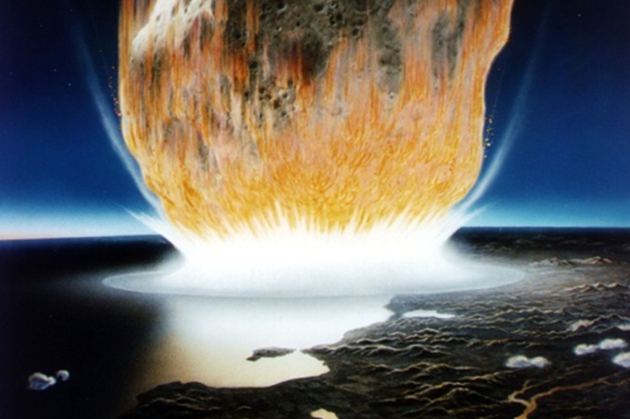
Earth is Not in the Midst of a Sixth Mass Extinction. A matter of debate and perspective; here's an excerpt from The Atlantic: "...So
things don’t look so good, no matter where we look. Yes, the victims in
the animal world include scary apex predators that pose obvious threats
to humans, like lions, whose numbers have dropped from 1 million at the
time of Jesus to 450,000 in the 1940s to 20,000 today—a decline of 98
percent. But also included have been unexpected victims, like
butterflies and moths, which have declined in abundance by 35 percent
since the 1970s. Like all extinction events, so far this one has been
phased and complex, spanning tens of thousands of years and starting
when our kind left Africa. Other mass extinctions buried deep in earth’s
history have similarly played out over tens of thousands, even hundreds
of thousands of years..." (File image: NASA / Reuters).
NASA Data Suggest Future May Be Rainier Than Expected. Details from NASA: "...Su's team found that most of the climate models underestimated the rate of increase in precipitation for each degree of surface warming that has occurred in recent decades. The models that came closest to matching observations of clouds in the present-day climate showed a greater precipitation increase for the future than the other models. Su said that by tracing the underestimation problem back to the models' deficiencies in representing tropical high clouds and the atmospheric general circulation, "This study provides a pathway for improving predictions of future precipitation change..."
Photo credit: "Flood waters rising in Boise, Idaho, April 6." Photo: Associated Press.
Photo credit: "A hurricane dumped 15 inches of rain on Charleston, S.C., two years ago. This was the result." North Charleston - Wikimedia Commons.
This Is How Big Oil Will Die? A story at Medium caught my eye: "...Let’s
bring this back to today: Big Oil is perhaps the most feared and
respected industry in history. Oil is warming the planet — cars and
trucks contribute about 15% of global fossil fuels emissions — yet this
fact barely dents its use. Oil fuels the most politically volatile
regions in the world, yet we’ve decided to send military aid to unstable
and untrustworthy dictators, because their oil is critical to our own
security. For the last century, oil has dominated our economics and our
politics. Oil is power. Yet I argue here that technology is about to
undo a century of political and economic dominance by oil. Big Oil will
be cut down in the next decade by a combination of smartphone apps,
long-life batteries, and simpler gearing. And as is always the case with
new technology, the undoing will occur far faster than anyone thought
possible..."
Photo credit: WHMP / clipart.com.
Photo credit: "A refinery in La Mède, France operated by oil giant Total." Photo: Balint Porneczi/Bloomberg News.
U.S. Cities Don't Need the Paris Accord to Fight Climate Change. Fortune Magazine has the Op-Ed, here's an excerpt: "...Cities can incorporate alternative fuel vehicles into municipal fleets. Within Texas, they have made widely varying progress along this line. Whereas Dallas Area Rapid Transit has converted most of its buses to use cleaner compressed natural gas, Houston’s fleet is dominated by diesel buses, although it unveiled its first electric bus late last year. By comparison, in China, the city of Shenzhen has more than 10 million residents and will feature an entirely electric bus fleet by the end of this year. This is one area where American cities can and should improve dramatically. Cities can also reduce emissions by helping residents pay for rooftop solar installations or other energy efficiency improvements, and expanding bike lanes to make zero-carbon commuting more viable. It is promising that U.S. cities are stepping up to the plate, but city leaders need to carefully plan the policies they enact..."
San Diego Commits To 100% Clean Energy. Yale Climate Connections has a video and story: "San Diego recently became one of the largest cities in the country to commit to the goal of 100 percent clean electricity city-wide. It’s just one part of a climate action plan that aims to cut the entire city’s global warming pollution over the next 18 years to half its 2010 levels. The plan also sets targets to electrify all city vehicles, divert waste from landfills, reduce water use, and increase the use of bikes and mass transit. It’s a big goal. Hooven: “The fun part of announcing it is over. Now we just need to put our heads down and get to work.” That’s Cody Hooven, chief sustainability officer for the city..."
Image credit: YARA Birkeland. Source: YARA.
Battery Storage and Rooftop Solar Could Mean New Life Post-Grid for Consumers. Here's an excerpt from The Guardian: "...Before people invented the fridge, we produced food, we consumed food immediately,” says Wang, director of the Centre for Clean Energy Technology at the University of Technology, Sydney. “With the development of appropriate electricity storage technology, the electricity is like our food – you can store it and whenever you need that electricity, you can use that immediately.” Batteries as a means to store electricity are nothing new. But with solar photovoltaic units now found on 16.5% of Australian residential roofs, battery storage has stepped into the big league. What was once viewed as an add-on to solar photovoltaic is now driving a revolution in the energy sector and turning the concept of a national electricity grid upside down..."
File photo credit: Electrek.
Copper Demand for Electric Cars to Rise Nine-Fold by 2027: ICA. Reuters has details: "The growing number of electric vehicles hitting roads is set to fuel a nine-fold increase in copper demand from the sector over the coming decade, according to an industry report on Tuesday. Electric or hybrid cars and buses are expected to reach 27 million by 2027, up from 3 million this year, according to a report by consultancy IDTechEx, commissioned by the International Copper Association (ICA). "Demand for electric vehicles is forecast to increase significantly over the next ten years as technology improves, the price gap with petrol cars is closed and more electric chargers are deployed," IDTechEx Senior Technology Analyst Franco Gonzalez said in the report. "Our research predicts this increase will raise copper demand for electric cars and buses from 185,000 tonnes in 2017 to 1.74 million tonnes in 2027," Gonzalez said..."
File image: Shutterstock.

Image credit: Alex Fine for Variety.

The Secret Origin of the iPhone. The Verge has a fascinating story; here's a clip: "... But
if there’s anything I’ve learned in my efforts to pull the iPhone
apart, literally and figuratively, it’s that there are rarely concrete
beginnings to any particular products or technologies — they evolve from
varying previous ideas and concepts and inventions and are prodded and
iterated into newness by restless minds and profit motives. Even when
the company’s executives were under oath in a federal trial, they
couldn’t name just one starting place. “There were many things that led
to the development of the iPhone at Apple,” Phil Schiller, senior vice
president of worldwide marketing, said in 2012. “First, Apple had been
known for years for being the creator of the Mac, the computer, and it
was great, but it had small market share,” he said. “And then we had a
big hit called the iPod. It was the iPod hardware and the iTunes
software. And this really changed everybody’s view of Apple, both inside
and outside the company. And people started asking, Well, if you can
have a big hit with the iPod, what else can you do? And people were
suggesting every idea, make a camera, make a car, crazy stuff.” And make
a phone, of course..."
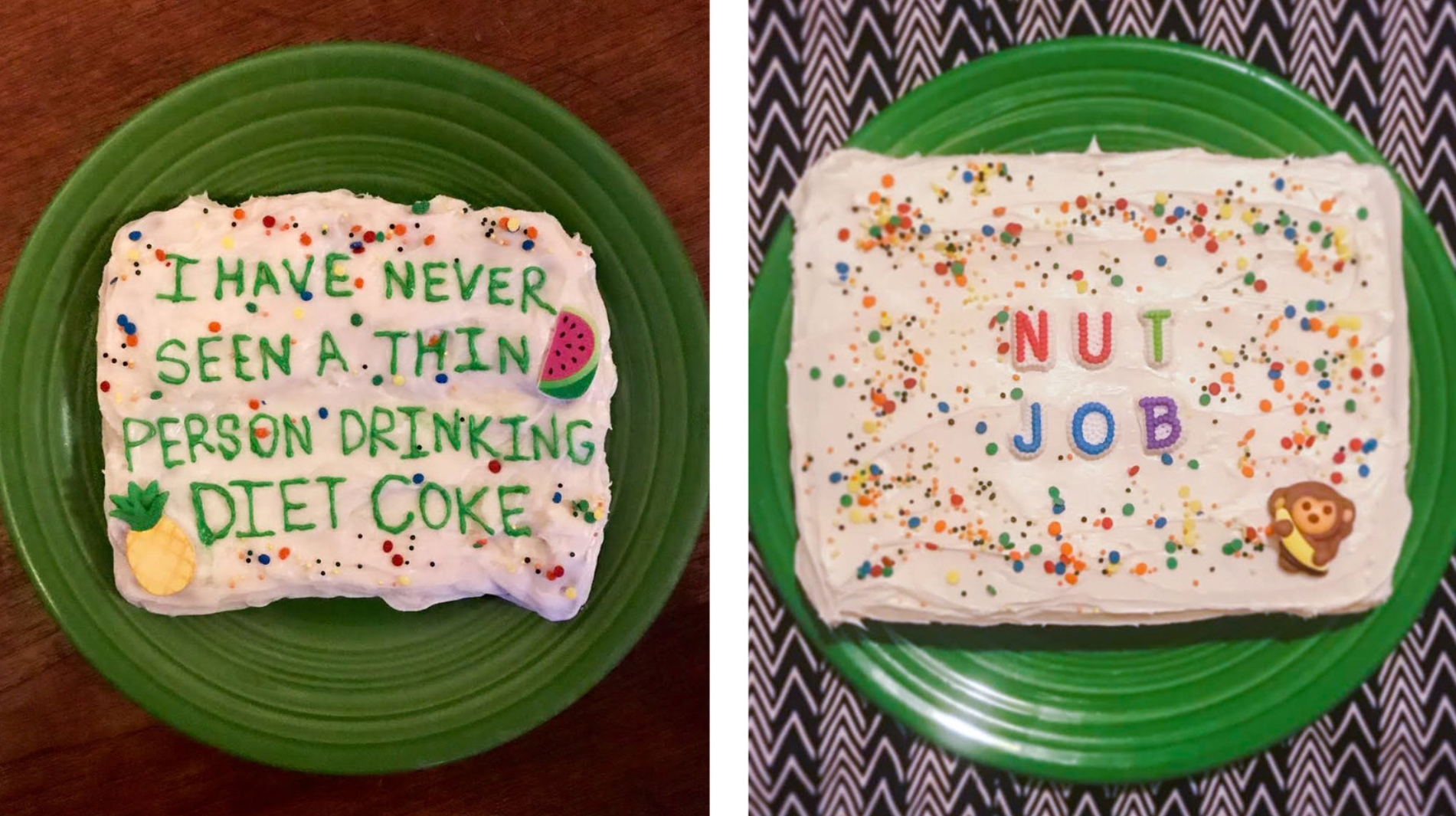
Sweet! Baker Makes Internet Trolls Eat Their Words - Literally. I couldn't resist a story at NPR: "The social media world is heavily populated by trolls — you know, those people who write nasty, mean comments online. Sometimes it can be tempting to respond back, but what if there's a better alternative? Like sending them a cake.... with their words written on it. New York City baker Kat Thek does just that. She's the founder of Troll Cakes, a bakery and detective agency. The process is simple. First, customers go to the Troll Cakes site to submit the comment and address of the troll in question. Thek will then bake a cake, write the comment on it using frosting or fondant letters, wrap it up in festive confetti, and send it to the perpetrator..." (Image credit: Troll Cakes).
Photo credit: "Samuel West, curator of the Museum of Failure, holds a bottle of Heinz ‘Green Sauce’ ketchup at the Museum of Failure in Helsingborg, Sweden. West has put together a collection of failed products that also includes Fat-Free Pringles potato chips and a frozen lasagna by toothpaste maker Colgate." (James Brooks/AP).
TODAY: Sunny, storm-free! Winds: W 10-15. High: 86
THURSDAY NIGHT: Partly cloudy. Low: 64
FRIDAY: Partly sunny, late-day thunder possible. Winds: SW 5-10. High: 85
SATURDAY: Unsettled and humid, few T-storms likely. Winds: S 10-15. Wake-up: 66. High: 81
SUNDAY: Touch of October. Windy and cool, few showers. Winds: NW 10-20. Wake-up: 60. High: 69
MONDAY: More sun, late-day shower risk. Winds: NW 8-13. Wake-up: 58. High: 74
TUESDAY: Mostly cloudy, stray shower. Winds: NW 10-15. Wake-up: 56. High: 71
WEDNESDAY: More sun, closer to average. Winds: SE 5-10. Wake-up: 58. High: 77
Climate Stories...
Photo credit: "Bathers on the Baltic have recently been confronted with a new threat: dangerous disease that is normally only found in warm water." Priit Vesilind, National Geographic Creative.
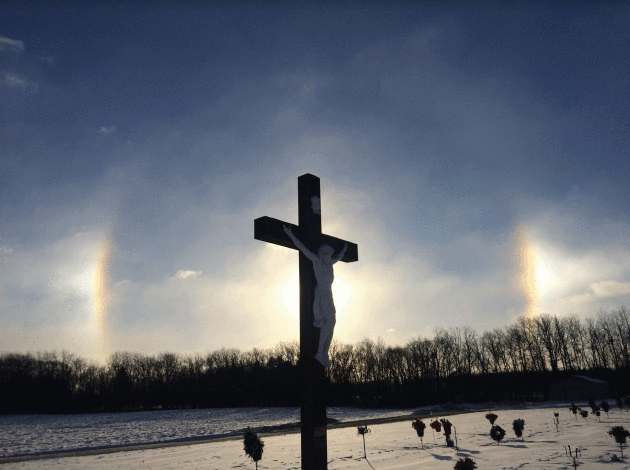
POV: A Doctor's Prescription for Climate Change. Here's a snippet of an Op-Ed at The Palm Beach Post: "...Florida’s rise in the heat index is the highest of any state each year and will continue, according to a National Climate Assessment report by a team of more than 300 experts guided by a 60-member federal advisory committee. These heat waves are particularly dangerous to seniors, those with chronic medical conditions, outdoor laborers, and the poor. Doctors like me see increased cardiorespiratory problems, such as chronic obstructive pulmonary disease (COPD) attacks. There will be more asthma attacks from reduced air quality and increased carbon pollution, and more heart attacks from already choked arteries made worse by heat stress, according to the Florida Department of Health. Newer or re-emerging infections such as Zika, chikungunya and dengue, spread by mosquitoes, will continue..."
How Retiring Nuclear Power Plants May Undercut U.S. Climate Goals. The expression that comes to mind is "pick your poison". Keep nuclear plants going and try to address concerns with radioactive fuel storage, or risk an uptick in CO2 emissions from burning more natural gas and coal? The New York Times reports: "Over the last decade, a glut of cheap natural gas from hydraulic fracturing has driven hundreds of dirtier coal plants in the United States out of business, a big reason carbon dioxide emissions fell 14 percent from 2005 to 2016. But more recently, that same gas boom has started pushing many of America's nuclear reactors into early retirement - a trend with adverse consequences for climate change. The United States' fleet of 99 nuclear reactors still supplies one-fifth of the country's electricity without generation any planet-warming greenhouse gases. When those reactors retire, wind and solar usually cannot expland fast enough to replace the lost power. Instead, coal and natural gas fill the void, causing emissions to rise..."
Photo credit: "The Three Mile Island nuclear power plant in Middletown, PA. Exelon has said it will shut down the last reactor there by 2019 unless it receives financial assistance." Jonathan Ernst, Reuters.
Photo credit: "The CCGS Amundsen, an icebreaker with 40 scientists on board, was diverted from the first leg of a journey through the Arctic on Sunday to help search and rescue efforts off the coast of Newfoundland in the Strait of Belle Isle." (Canadian Department of Fisheries and Oceans).
Photo credit: "NASA handout photo dated 10/11/16 showing a rift in the Larsen C Ice Shelf in Antarctica, as scientists have said that an iceberg a quarter the size of Wales is poised to break off from it." Photograph: NASA/John Sonntag/PA.
No comments:
Post a Comment